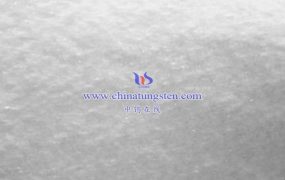Add 0.1452 g ( 0.5 mmol) zinc nitrate ( Zn(NO3)2•6H2O) and 1 g PVP or PV P and SDBS mixed surfactant to 40mL of deionized water, stir, and then add 0.165g ( 0.5mmol ) of sodium tungstate ( Na2WO4 • 2H2O ) was added to the above solution, and the above mixed solution was continuously stirred for 30 minutes to ensure that all the reagents were evenly dispersed. The mixture was added to a 50 mL polytetrafluoroethylene autoclave, and deionized water was added until the total volume of the autoclave reached 80%. The autoclave was sealed, heated to 180°C and maintained at 180°C for 24 hours, then allowed to cool down to room temperature naturally. The white precipitate was collected and washed several times with deionized water and absolute ethanol. Then, the samples were baked in vacuum at 60 °C for 6 h.
The diffraction peaks are strong and sharp, indicating high crystallinity of the product. After careful indexing, it was found that all the diffraction peaks could be indexed to monoclinic Na2WO4 (JCPDS Card NO.73-0554) respectively, and there were no impurity peaks, which indicated that the product prepared by this method was very pure, and there was no Other by-products are produced. According to this diffraction pattern, the lattice parameters that can be read from the JCPDS Card are: a = 4.720A °, b = 5.700A °, and c = 4.950A °, which are consistent with the standard values reported in the literature.
The morphology of the sample is observed by TEM. Figure 2(a) is the TEM photo of the obtained sample zinc tungstate. It can be seen from the figure that the product is all a sheet structure, the sample length is about 30-50nm, and the width is about 10 -20nm.
Their photocatalytic activity was tested by degrading rhodamine B (RB) at room temperature. In the photocatalytic test, 100 mg of the product was put into 100 mL of RB solution with a concentration of 1.0×10 -5 M. The solution was stirred in a dark room for 10 minutes to allow it to reach adsorption equilibrium. The solution was then irradiated with ultraviolet light from a 1000 W xenon lamp at room temperature (using a 400 nm filter, the reactor was placed in a black box, the top of the black box was opened, and the filter was placed on top so that the transmitted light was ultraviolet light. Samples were taken every ten minutes, and the samples were centrifuged to remove a small amount of precipitate, and used for ultraviolet absorption spectroscopy to detect the degradation of RB.

Fig. 9 is the evolution of UV absorption spectrum of RB solution with 100 mg nanostructured ZnWO4 as catalyst. It can be seen from the figure that as the irradiation time of ultraviolet light prolongs, the absorption peak intensity of the ultraviolet absorption spectrum corresponding to the RB solution gradually weakens, and disappears completely after 50 minutes. It is worth noting that the concentration of RB solution can be determined by the characteristic peak near 553 nm in the ultraviolet absorption spectrum. Finally, there was no absorption band near 553 nm in the UV absorption spectrum, indicating that RB was completely degraded.
More details of tungstate product, please visit website: tungstate.net
Please contact CHINATUNGSTEN for inquiry and order of tungstate:
Email: sales@chinatungsten.com
Tel.: 86 592 5129595


